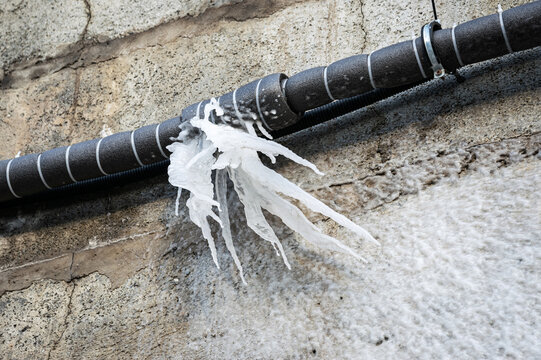Preventing Frozen Pipes in Cold Weather: Pro Advice
Preventing Frozen Pipes in Cold Weather: Pro Advice
Blog Article
On this page on the next paragraphs you will discover a good deal of awesome information and facts all about 6 Ways to Prevent Frozen Pipes.
:strip_icc()/snow-outdoor-faucet-pipes-4af65d1e5e904fb1aa7bf74071fe5d89.jpg)
Winter can ruin your pipes, especially by freezing pipes. Here's how to stop it from taking place and what to do if it does.
Introduction
As temperatures decrease, the danger of frozen pipes increases, potentially causing pricey repair work and water damage. Comprehending just how to stop icy pipes is crucial for home owners in cold environments.
Comprehending Frozen Pipes
What triggers pipes to freeze?
Pipes ice up when subjected to temperatures below 32 ° F (0 ° C) for extended durations. As water inside the pipelines freezes, it expands, putting pressure on the pipe wall surfaces and possibly triggering them to burst.
Dangers and problems
Frozen pipes can result in water system interruptions, property damage, and pricey fixings. Ruptured pipes can flooding homes and trigger substantial structural damages.
Indications of Frozen Pipeline
Identifying icy pipes early can stop them from rupturing.
How to determine icy pipelines
Look for lowered water flow from faucets, uncommon odors or noises from pipelines, and visible frost on subjected pipelines.
Prevention Tips
Protecting at risk pipes
Wrap pipelines in insulation sleeves or make use of heat tape to safeguard them from freezing temperature levels. Concentrate on pipelines in unheated or external areas of the home.
Heating techniques
Keep indoor areas sufficiently warmed, specifically areas with pipes. Open cabinet doors to allow warm air to flow around pipelines under sinks.
Protecting Exterior Pipes
Garden pipes and outdoor faucets
Disconnect and drain yard hose pipes before winter. Install frost-proof spigots or cover exterior faucets with insulated caps.
What to Do If Your Pipelines Freeze
Immediate actions to take
If you believe frozen pipelines, keep taps available to alleviate stress as the ice melts. Make use of a hairdryer or towels soaked in hot water to thaw pipelines gradually.
Long-Term Solutions
Structural modifications
Consider rerouting pipes far from outside wall surfaces or unheated areas. Add additional insulation to attic rooms, cellars, and crawl spaces.
Updating insulation
Buy top quality insulation for pipes, attics, and walls. Appropriate insulation assists preserve constant temperatures and decreases the danger of icy pipes.
Final thought
Preventing icy pipes needs proactive steps and fast actions. By recognizing the reasons, signs, and preventive measures, home owners can safeguard their plumbing during cold weather.
5 Ways to Prevent Frozen Pipes
Drain Outdoor Faucets and Disconnect Hoses
First, close the shut-off valve that controls the flow of water in the pipe to your outdoor faucet. Then, head outside to disconnect and drain your hose and open the outdoor faucet to allow the water to completely drain out of the line. Turn off the faucet when done. Finally, head back to the shut-off valve and drain the remaining water inside the pipe into a bucket or container. Additionally, if you have a home irrigation system, you should consider hiring an expert to clear the system of water each year.
Insulate Pipes
One of the best and most cost-effective methods for preventing frozen water pipes is to wrap your pipes with insulation. This is especially important for areas in your home that aren’t exposed to heat, such as an attic. We suggest using foam sleeves, which can typically be found at your local hardware store.
Keep Heat Running at 65
Your pipes are located inside your walls, and the temperature there is much colder than the rest of the house. To prevent your pipes from freezing, The Insurance Information Institute suggests that you keep your home heated to at least 65 degrees, even when traveling. You may want to invest in smart devices that can keep an eye on the temperature in your home while you’re away.
Leave Water Dripping
Moving water — even a small trickle — can prevent ice from forming inside your pipes. When freezing temps are imminent, start a drip of water from all faucets that serve exposed pipes. Leaving a few faucets running will also help relieve pressure inside the pipes and help prevent a rupture if the water inside freezes.
Open Cupboard Doors
Warm your kitchen and bathroom pipes by opening cupboards and vanities. You should also leave your interior doors ajar to help warm air circulate evenly throughout your home.

Do you like reading up on Prevent Frozen Pipes ? Try leaving feedback further down. We will be delighted to see your responses about this piece. In hopes that you visit us again in the near future. Sharing is caring. Helping others is fun. I appreciate reading our article about How to Prevent Your Pipes From Freezing.
Services Report this page